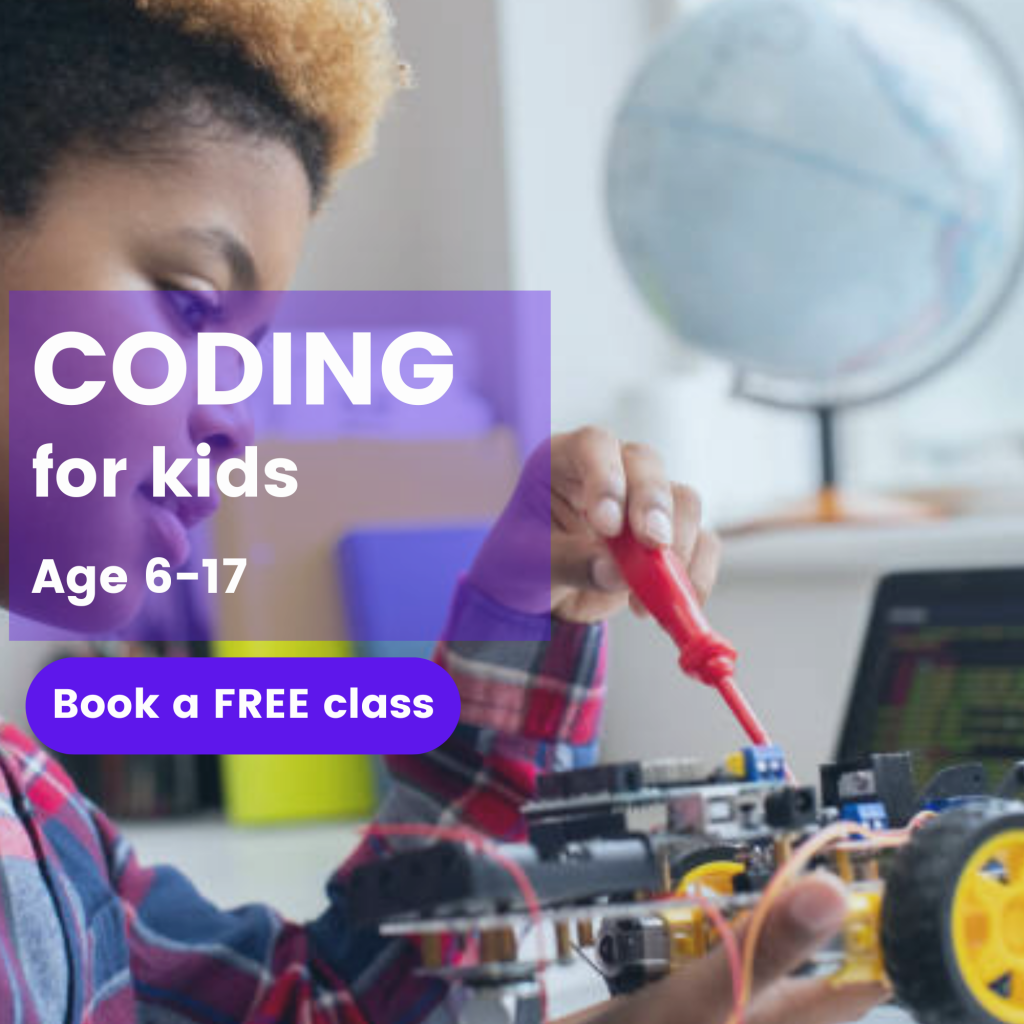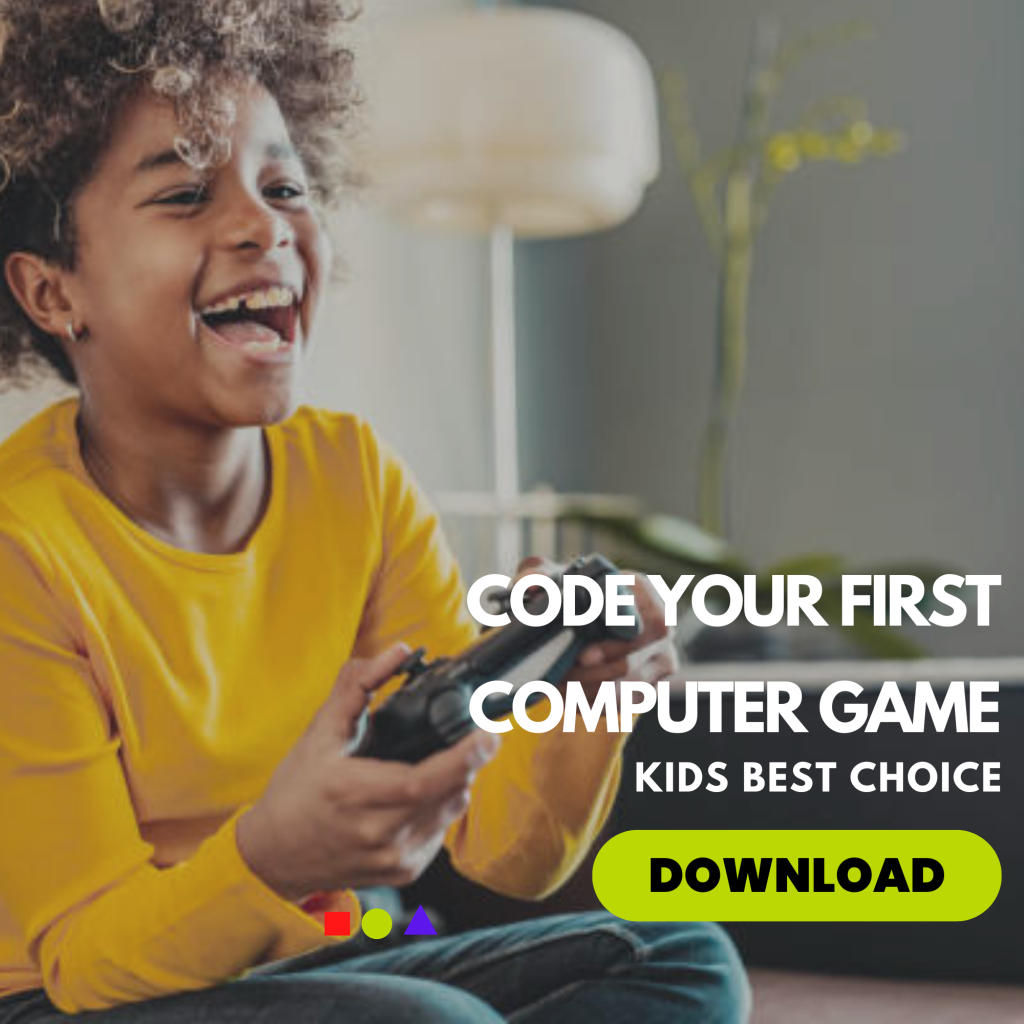Online coding for Kids. All You Need to Know in 2023
Learning to code has become an essential skill in the current digital era that empowers young minds and opens up a world of possibilities. The goal of learning to code goes beyond merely typing lines of text, it is a skill set to provide the next generation with the skills they need to create their future and have a good impact on the world. For parents looking to empower their kids with the skills of the future, this article will enlighten you on all that there is to know about coding which would transform your kids from being consumers of technology to better creators, problem solvers and innovators.
Why Should Kids and Teens Learn to Code?
Learning to code as a Kid or Teen comes with a variety of reasons, there are so many advantages that go beyond simply developing technical skills. Here are some compelling reasons in favour of online coding for Kids, and All You Need to Know:
- Problem-solving Skills: When Kids and Teens learn to code they nurture their ability to solve problems and think critically. This would enable them to learn to break down difficult issues into simpler, more manageable components and come up with logical solutions.
- Creativity and Innovation: There’s a feeling of joy that comes when kids see their imagination come to life. Coding is a great avenue for kids to express themselves creatively through software development, games and animation. It promotes creativity and allows kids the ability to come up with their ideas. At Imagine STEM Academy, our projects are designed to promote kid’s creativity and innovative ability.
- Confidence Building: Young kids’ self-confidence and sense of accomplishment can be increased when they successfully code and see the consequences of their labour.
- Digital Literacy: Coding improves digital literacy in an era where technology touches every aspect of life. Children who learn how computers and software operate will be more knowledgeable and responsible technology users.
- Career Opportunities: A great deal of job opportunities in professions including software development, data science, artificial intelligence, and more may be accessed by learning to code. Early exposure can aid children in making educated career decisions.
- Educational Enrichment: Math and science may benefit from and be enhanced by coding. It offers educational principles and some real-world applications.
- Fun and Engagement: For kids and teens, learning to code can be enjoyable and fulfilling since a lot of the activities are entertaining and interesting.
- Understanding the World: Kids who learn to code are better equipped to understand and engage with the technology that is around them. It offers insights into how the everyday gadgets they use operate on a higher level.
- Adaptability: The ability to adapt is a trait that learning to code teaches. A growth mindset, which is essential for flexibility and lifelong learning, is developed in children and teenagers who learn to code.
- Collaboration: Teamwork and cooperation are common aspects of coding, which teaches kids how to cooperate, exchange ideas, and find solutions to issues as a group.
With these reasons now established let’s go to the benefits of coding for both kids and Teens
What are the Benefits of Coding for Kids and Teens?
The benefits of coding for kids and teens are many. These benefits offer strength for a child’s cognitive and practical skills as well as personal development. Listed below are some key benefits:
- Thinking Critically: Coding trains the minds of young kids to be solution providers. When they start coding their critical thinking skills strengthen and they develop skills like analytical thinking, logical reasoning, and attention to detail.
- Math and Logic: There are some programming languages that require the use of math and logic when kids begin to get used to such languages it will help improve their logical thinking, helping them understand and apply maths to real-life tasks.
- Persistence and Resilience: Learning new things might be challenging especially when it comes to coding, but the benefit that comes with it is amazing. Kids develop persistence and resilience when they learn to solve bugs or errors on their code.
- Algorithmic Thinking: Children who learn to code are better able to grasp processes and sequences and to reason algorithmically.
- Self-Expression: Coding opens for self-expression via artistic endeavours, assisting children and teenagers in discovering their own voices in the digital sphere.
- Attention to Detail: Coding points out attention to detail since tiny errors may have a big influence on a program’s operation.
- Ethical Considerations: Youngsters may learn about the moral implications of technology, including online safety, privacy, and responsible digital citizenship.
- Future-Proofing: Coding abilities are becoming more and more valuable and reliable in the digital era. They may make it possible for you to pursue many other technologically connected careers.
- Global Perspective: Kids and teenagers may be exposed to a varied range of viewpoints and ideas by participating in a global community of learners and creators through coding.
- Entrepreneurship: Learning to code can enable young people to launch their own digital companies or creative ventures.
The benefits of kids learning to code have a variety of advantages, such as fostering cognitive growth, allowing for creative expression, and preparing them for a digital future.
What are the best coding guides for children?

There are several online and printed tools for teaching coding to children and teenagers. These resources help your kids to be better at coding. Here are several coding tutorials, websites, and tools made especially for young students:
- Online Platforms
- Code.org: Code.org is a free coding platform that offers your kids the necessary resources that they need to get started with coding. Code.org also offer free coding tutorial and online courses for kids.
- Scratch: Scratch is a block-based coding language specially designed to promote a child’s creative and cognitive thinking. With scratch, your kids can create platform games, interactive stories and animations
- Tynker: Tynker offer coding courses, games and tasks that cover programming languages such as Python and Javascript. These languages help to boost math logic and resilience in every child.
- Imagine STEM Academy: Imagine STEM Academy is a coding platform that offers online tutorials and courses for kids who are just learning to code. It’s a coding platform that covers block-based coding from scratch, mobile app development, and web design tutorials.
- Books
- “Teach My Kids to Code” by Imagine STEM Academy: A step-by-step guide that introduces your kids to the world of coding. It also involves practical examples and debugging exercises after each lesson.
- “Python for Kids” by Jason Briggs: A Python-based coding material designed for kids with exercises and practical examples that are easy to understand.
- “Coding for Kids” by Raj: A Thorough Guide that introduces coding to kids through step-by-step instructions.
- YouTube Channel
- The Coding Train: anchored by Daniel Shiffman, The Coding Train is a coding YouTube channel that offers interactive coding lessons with the goal of making creative coding projects.
- Imagine STEM Academy: A YouTube channel that introduces step-by-step coding tutorials through coding lessons and projects that are easy to understand.
- Code with Chris: Code with Chris is a coding YouTube channel that focuses on iOS app development lessons fitting for Teens interested in mobile app development.
- Interactive Games
- CodeCombat: A gaming platform that introduces coding through engaging problems and conquest.
- LightBot: A game that teaches programming theory and problem-solving through puzzles.
- Coding Clubs and Camps
Various after-school programs, summer camps, and coding clubs in the area are created specifically for kids and teens who are interested in learning to code. These can provide hands-on tasks and guided instruction.
Coding can be a very imaginative and fulfilling activity, but when it comes to selecting a guide for your kids consider a child’s age and coding experience to discover what interests them the most.
Coding in Schools
How to introduce coding programs into your school
Careful preparation and coordination are necessary when implementing coding programs in a school. A step-by-step manual for starting coding programs at your school is provided below:
- Research and Gather Information:
- Learn about the advantages of learning to code and how it relates to academic objectives.
- Look into coding courses as well as materials that are appropriate for the grade levels at your school.
- Build a Case
- Make an excellent case for including coding in the curriculum at your school. Emphasis on the advantages of your job and schooling.
- Present your point of view to important parties, such as school board members, administrators, teachers, and parents.
- Identify Resources
- Identify the devices, applications, and educational resources required for coding programs.
- Look into possible means of funding, such as grants, contributions, and collaborations.
- Instructor Training
- If instructors aren’t already familiar with coding, provide them training chances to become so.
- Encourage interested educators to take on roles as mentors or instructors for coding.
- Choose a Curriculum
- Choose a coding program that is appropriate for the age ranges and demands of your school. Platforms like Code.org, Scratch, Tynker, and others are available as options.
- Make the curriculum specific to the learning goals of your school.
- Start Small
- Start with a trial version to determine its viability and interest. Start with only one class or grade level.
- Utilize the demo session feedback and make any improvements that are required.
- Integrate Coding Across Subjects
- Look for ways to incorporate coding into other disciplines like math, physics, or the arts. Projects that span disciplines can improve education.
- Create Extracurricular Activities
- Create coding clubs, after-school programs, or summer camps to provide interested children with more learning chances.
- Engage Parents and the Community
- Inform parents of the advantages of coding instruction and enlist their assistance.
- Create coding competitions or open houses for the neighbourhood to display learners’ accomplishments.
- Assessment and Evaluation
- Create a mechanism for evaluating the coding proficiency and growth of your pupils.
- Regularly assess the coding program’s efficiency and make adjustments in light of comments and findings.
- Scale Up
- If the demo session is successful, add more grade levels and classes to the coding education curriculum.
- For pupils who want to continue coding further, think about providing advanced coding classes.
- Advocacy and Promotion
- To generate interest and support for coding programs, share student accomplishments and success stories.
- Share resources and best practices with other educational institutions.
- Stay Informed
- For your program to remain current, stay up to speed on changes in technology and coding instruction.
- Sustain and Support
- By obtaining financing, upgrading materials, and providing instructors with professional development opportunities, coding programs may continue to get continuing support.
- Celebrate Achievements
- Awards, displays, or contests can be used to acknowledge and promote the coding successes of children.
The implementation of coding instruction in schools depends on collaboration between educators, administrators, parents, and the community.
Join Our Coding Community
Why joining a coding community as a parent is important for your kids
Participating in a coding community as a parent may benefit your children’s learning process and general development in a variety of ways. Why it matters is as follows:
- Support and Encouragement: You can have a better understanding of your child’s coding interests and difficulties by participating in a coding community. You may encourage and support them emotionally, which will increase their motivation and self-assurance.
- Learning Together: Coding lessons may strengthen relationships when done jointly. As a team, you may work through coding problems and discover new ideas, encouraging your child’s passion for learning.
- Shared Interests: Participating in a coding community shows the kids that you genuinely care about their interests and passions. Your parent-child relationship may be strengthened by this common interest.
- Access to Resources: Coding communities frequently exchange useful materials including lessons, coding environments, and project concepts. These tools can help you and your kid develop their coding abilities.
- Networking: Your network of other parents who are interested in and concerned about coding education may provide you with ideas, counsel, and support.
- Modelling Growth Mindset: You may provide your child with a growth mindset role model by getting involved in the coding community. Setting a good example includes being ready to experiment, making errors, and trying to find solutions.
- Access to Opportunities: Events, workshops, and contests that certain coding communities provide might give your youngster more possibilities to learn and experience
- Understanding Trends: Staying connected with coding communities helps you keep updated about developments in technology and education. This information may be important in guiding your child’s coding path and career options.
- Fun and Enjoyment: Together, you can have fun and enjoy learning how to code, which will help your youngster develop a favourable attitude toward technology and education.
- Parent-Child Projects: As a parent-child team, you may work together on coding tasks to stimulate creativity and provide special learning opportunities.
Imagine STEM Academy is a coding platform that provides parents with the opportunity to be a part of our coding community. The community provide parents with the basic knowledge that they need to help their kids become better at coding. If you’d be willing to be a part of our coding community register with us by clicking the link below
https://chat.whatsapp.com/Eu7goF1qDyP0YSDxdl3tvZ
In conclusion, becoming a part of a coding community as a parent will help to provide a positive learning environment for your kids as they begin to learn how to code. You may participate in their hobbies, offer advice, and create memorable learning opportunities, all of which will help them acquire useful skills and an enduring passion for coding and technology.



